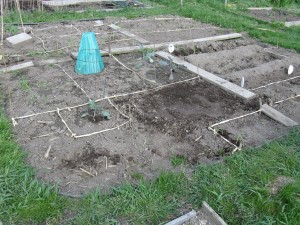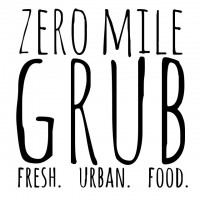Planning your garden – what to plant, and where to put it – is critical if you want to maximize your yield from a small space. The goal is to allow each plant to have as much space as it needs to thrive, without having unused space.
Different types of vegetables need different amounts of space. There are many websites you can use to determine plant spacing, such as at West Coast Seeds.
Follow these space recommendations, at least initially, until you get a feel for how much room your own varieties need.
Another important thing to consider is how tall a plant gets. You should generally plant taller crops where they will not shade out smaller plants. For example, pole beans and tomatoes should be planted behind carrots and lettuce, relative to the sun. The first year I grew chamomile, I didn’t realize how large the plant would get. It completely blocked the pepper plants that were behind them, and I didn’t get a single pepper!
Then comes the fun: trying to squeeze all these considerations into your garden space. Since different plants are alloted different amounts of space, it sort of turns into a game of Tetris. I usually end up with a few oddly shaped spaces. It’s easiest to do this electronically, because you will likely need to redo it a few times.
As an example, my garden plan for 2016 is shown above. This is for the allotment garden, which is about 14×16′. The sunniest spot is in the top right corner. The black areas forming a central cross are walking paths – don’t forget to include some of those.
 In the spring, before I plant my earliest greens, I use some old sticks and twine to mark out the regions. That way I don’t encroach on the space of the heat loving plants that need to go in at a later date.
In the spring, before I plant my earliest greens, I use some old sticks and twine to mark out the regions. That way I don’t encroach on the space of the heat loving plants that need to go in at a later date.
Although you may make some last minute changes to your plan, when you actually start planting, it is a good idea to work on an outline beforehand. Plus, thinking about the garden helps keep the winter blahs away!

